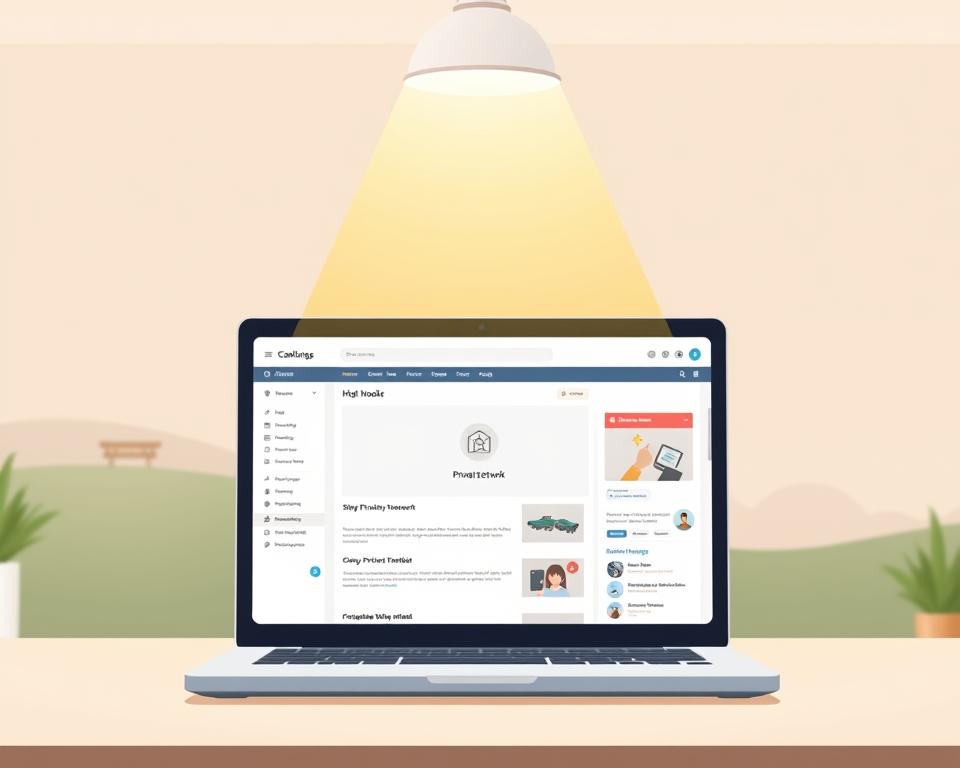PBN Link Building Explained
Did you know nearly 60% of SEO professionals have used private blog network links? The appeal of a Private Blog Network (PBN) is its power to boost a website’s authority. That often translates into higher SERP positions. However, what exactly is meant by PBN within SEO? It might seem like a quick way to climb the ranks, yet using PBN SEO services poses significant risks. Those dangers include harsh Google penalties. Let’s explore private blog service basics and why so many in SEO find them irresistible.
PBN Explained
Essentially, a PBN is a cluster of blogs designed to funnel link juice to a primary domain. It works by sending SEO value via backlinks from secondary sites to your core site. Many PBNs use expired domains, which retain some authority, to create a credible facade for search engines like Google.
A PBN’s intent is straightforward. Site owners use them to improve their online presence. They do this by:
- Acquiring targeted backlinks to lift rankings.
- Managing link parameters for perfect keyword targeting.
- Fostering a web of sites that exchange links in a natural-looking manner.

How do Private Blog Network Links Work?
PBN links work by creating private blog network backlinks that mimic natural links. By funneling link juice from a PBN site, you trick search engines into boosting your site’s authority.
The process involves carefully chosen keywords and domains within a network of blogs. Yet despite potential instant gains, the method carries grave dangers.
Success hinges on embedding links in contextually relevant, high-quality content.
The Advantages of Using Private Blog Networks
A private blog network (PBN) offers numerous advantages for SEOs looking to enhance their backlink profiles. You gain tight oversight of each link’s placement and anchor text.
Leveraging aged domains with residual trust is a PBN hallmark.
They empower you to weave keyword-optimized anchors across your network.
PBN Pitfalls
PBNs carry significant risks that every SEO strategist must weigh. A major concern is the risk of Google penalizing websites that use these networks.
Why Some SEOs Choose PBNs over Traditional Link Building
In the competitive world of SEO, professionals often face challenges with traditional link-building strategies. PBNs offer a unique advantage: a sense of control over backlink strategies.
How to Run a PBN Safely
Effective pbn management demands careful attention and adherence to best practices. Begin with thorough due diligence when purchasing expired domains.
Spotting PBN Links
Spotting PBN links on your site is key to keeping your domain reputation healthy.
| Indicators of PBN Links | Description |
|---|---|
| Low-Quality Domains | Links from domains with poor authority or less than optimal rankings. |
| Irrelevant Content | Links embedded in content that does not match your site’s niche. |
| Suspicious Anchor Text | Repetitive or irrelevant anchor text patterns. |
| Thematic Similarity | Lack of a coherent theme among linking pages and domains. |
How to Disavow Private Blog Network Links
- Identify harmful PBN backlinks through thorough analysis.
- Create a disavow file correctly, listing specific URLs or domains to disavow.
- Upload the disavow file to Google Search Console.
Alternatives to Private Blog Networks
Consider guest posting for genuine backlinks.
PBN Misconceptions
Private Blog Networks (PBNs) are often misunderstood, affecting both new and seasoned SEOs.
Future of Private Blog Networks in SEO
| Factor | PBNs | Future SEO Practices |
|---|---|---|
| Content Quality | Low emphasis on genuine content | High emphasis on high-quality, valuable content |
| Risk Factor | High risk of penalties | Lower risk with authentic practices |
| User Engagement | Limited engagement | Enhanced user interaction and loyalty |
| Sustainability | Unsustainable in the long term | Focus on sustainable growth |
In Closing
Ultimately, PBN use can jeopardize your long-term SEO success.
